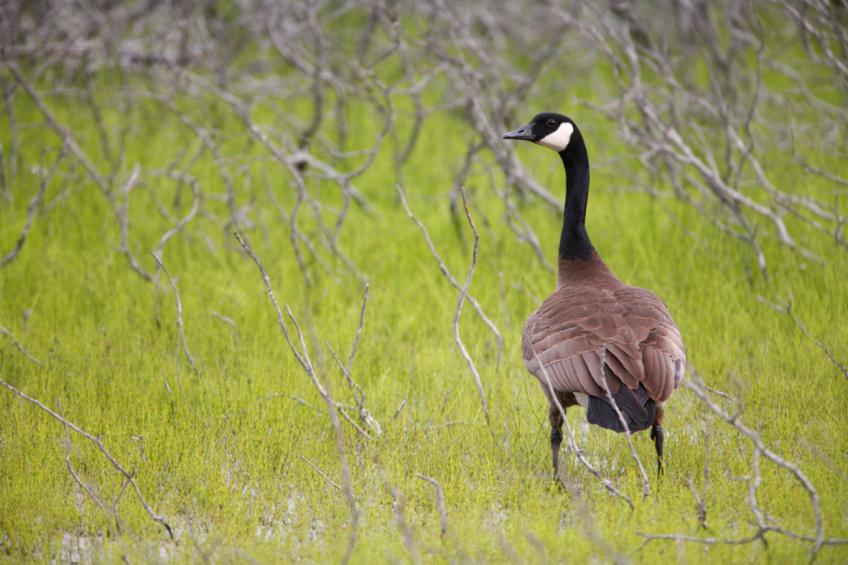Across the miles: Managing one of Alaska's migratory bird species
ALASKA—In the autumn months, the sky fills with an assortment of silhouettes, calls and beating wings of thousands of birds—the indications of fall migration. Many birds migrate for the winter, traveling thousands of miles across country and state lines. For these birds there are no borders; the landscape is theirs to navigate without a need for a passport or special permissions.
That can make monitoring a migratory species complicated. Not only are there borders between countries and states, but also landowners, agencies, rules and regulations. One migratory species of interest on the Copper River Delta in Alaska is the dusky Canada goose, or “duskys.” These large, white-cheeked geese breed almost exclusively on the Copper River Delta. By early November, they travel over 1,400 miles to western Oregon and/or southwest Washington for the winter.
A rapid decline in the population occurred in the 1970s. This decline spurred monitoring efforts to address concerns about the population size and habitats important to duskys. These concerns occur across the flyway, and addressing them requires the involvement of multiple state and federal agencies in Canada, Alaska, Oregon and Washington.
On the breeding grounds in Alaska, the Forest Service, U.S. Fish & Wildlife Service, and Alaska Department of Fish and Game work cooperatively to track population numbers, address concerns with predators and improve nesting success. Projects on the Copper River Delta include the installation and monitoring of artificial nest islands and increase of nesting habitat through tree removal. Every three years, in partnership with U.S. Fish and Wildlife Service and volunteers from the local community, the Forest Service conducts nest searches.
On the wintering grounds, which are often both federal and state-managed lands, U.S. Fish and Wildlife Service and state agencies in Washington and Oregon regulate hunting, track population numbers and address concerns with habitat degradation.
Management of migratory species requires collaboration from agencies across the flyway. Through shared conservation the dusky Canada goose population is increasing, promising a brighter future for this species.



